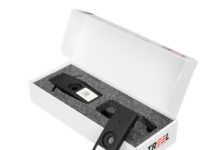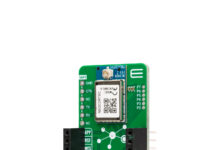
Introduction to WLAN & WiFi 6/6E
Reading email and browsing the Internet from any location is part of everyday life. Smartphones and tablets with built-in wireless-LAN (WLAN) technology are helping drive increasing data access outside and inside the home.
WLAN is a cable-less technology for data communications typically using Ethernet over a local area. The first IEEE 802.11 standard regulating WLAN technology, released in 1997, supported only the 2.4 GHz band, but in 2020 the WLAN technology began supporting the 6 GHz band. As a result, numerous new applications and services are expected to be developed using high-speed and large-capacity data communications based on the extremely wide frequency band of 1200 MHz. IEEE 802.11ax/11be (Wi-Fi 6E WLAN Standards are latest technology trend having more attention from industry. However, as with any new technology, engineers face new development challenges, including new testing requirements.
WiFi 6/ 6E Trends:
As per Business Wire, Public Wi-Fi hotspots is likely to reach 628 million by 2023 and it is expected that Wi-Fi6 hotspots will contribute nearly 11% of all public Wi-Fi hotspots by 2023. Major use cases of Wi-Fi6 hotspots include airports, public transportation, retail, healthcare, smart cities, and stadiums.
Embracing the Internet of Things (IoT) has further accelerated the adoption of Wi-Fi 6 and Wi-Fi 6E enabled routers and devices across industry verticals. Verticals showing growth include manufacturing, healthcare, smart city, public sector, etc. As per the analysis, the number of IoT connections is expected to reach more than 30 Billion by 2028. This massive rise in IoT connections will need Wi-Fi 6 and Wi-Fi 6E devices as the backbone.
Further, more than 60 million Wi-Fi 6 & 6E chipsets are expected to be shipped for automobile by 2026. Asia Pacific is expected to dominate the Wi-Fi 6 & 6E market with nearly 50% share in 2026. Wi-Fi 6 & 6E market in Asia Pacific is expected to reach USD 8,559 million by 2026, growing at a CAGR of 25.6% between 2020 and 2026. Consumer devices such as smartphone, tablets, laptops & PCs are expected to be major contributors
Advantages of WLAN 6-GHz Band:
The opening of the 6-GHz band as an unlicensed band solved many of the problems of the 2.4/5 GHz bands.
- Wide frequency band of up to 1.2 GHz solves congestion
- Operation using 160 MHz channels finally practical
- Supports high-speed, high-efficiency networks configured only of devices supporting IEEE 802.11ax
- Supports secure networks protected by latest WPA3 technology
WLAN Module Evaluation- Testing:
Many different types of products are connecting to the Internet as a result of the recent spread of IoT. These Internet connections are implemented by assembling products using WLAN modules that conform to the IEEE 802.11 standards. However, when using existing products and new products under development for IoT applications, not only must the chosen WLAN module be evaluated standalone, but it is also best to evaluate the final assembled product.
Ensuring product quality requires various processes and evaluation tests need latest Test and Measurement Solutions. Suitable T&M reduces test time through, cutting the total development time by omitting some of tests (as per standards) without thinking deeply runs the following risks.
- WLAN communications problems occur even after prototyping and final product development.
- Customer may claim about inability to communicate occur after product release despite confirming operation in the test laboratory
WLAN Devices are tested for Transmitter (Tx) and Receiver (Rx) parameter as per standards. This ensures product get success and acceptance in market- No compromise in product quality & brand value. Poor specs, non-standards compliance WLAN modules lead to slow internet speed, call drops and shorter communication- coverage. Thus, it is utmost importance to test WLAN modules in R&D and in production and during integration with CPE’s.
Anritsu has long been at the frontline of WLAN development, and now offers a full line of reliable solutions for development and manufacturing of 6-GHz band WLAN products.
The Wireless Connectivity Test Set MT8862A is designed to evaluate the receiver and transmitter characteristics of WLAN products meeting the IEEE802.11a/b/g/n/ac (2.4 and 5-GHz bands) specifications.
Transmitter Characteristics (Tx) Testing of WLAN Devices: Below table explains Tx parameter to be tested for different WLAN standards modules/AP.
| WLAN Standard? | 11b | 11a, g, n, ac | |||
| No | Items | Data | Ack | Data | Ack |
| Numeric Result | |||||
| 1 | Transmit Power | o | o | o | o |
| 2 | Crest Factor | o | o | o | o |
| 3 | EVM | o | x | o | x |
| 4 | Centre Frequency Tolerance | o | x | o | x |
| 5 | Symbol Clock Frequency Tolerance | o | x | ||
| 6 | IQ Offset | o | x | ||
| 7 | Phase & Magnitude Error | ||||
| Phase Error | o | x | |||
| Magnitude Error | o | x | |||
| 8 | IQ Imbalance | ||||
| Amplitude Imbalance | o | x | o | x | |
| Phase Imbalance | o | x | o | x | |
| Phase Error | o | x | |||
| 9 | Chip Clock Frequency Tolerance | o | x | ||
| 10 | Carrier Suppression from IQ Offset | o | x | ||
| 11 | Spectrum Mask | o | o | o | x |
| Graph Result | |||||
| 12 | IQ Constellation | o | x | o | x |
| 13 | Power Profile | o | o | o | o |
| 14 | Spectrum Mask | o | o | o | x |
Tx Test: The MT8862A supports the following transmit test items specified by IEEE802.11.
| Test Item | 802.11a | 802.11b | 802.11g | 802.11n | 802.11ac |
| Transmit power levels | 18.3.9.2 | 17.4.7.2 | 19.4.8.2 | 20.3.20.3 | — |
| Transmit spectral mask*4 | 18.3.9.3 | 17.4.7.4 | 19.5.5 | 20.3.20.1 | 22.3.18.1 |
| Transmit center frequency tolerance | 18.3.9.5 | 17.4.7.5 | 19.4.8.3 | 20.3.20.4 | 22.3.18.3 |
| Symbol clock frequency tolerance | 18.3.9.6 | 17.4.7.6 | 19.4.8.4 | 20.3.20.6 | 22.3.18.3 |
| Transmit power-on and power-down ramp | — | 17.4.7.7 | — | — | — |
| Transmitter center frequency leakage | 18.3.9.7.2 | — | 18.3.9.7.2 | 20.3.20.7.2 | 22.3.18.4.2 |
| Transmitter spectral flatness | 18.3.9.7.3 | — | 18.3.9.7.3 | 20.3.20.2 | 22.3.18.2 |
| Transmitter modulation accuracy test | 18.3.9.8 | 17.4.7.9 | 18.3.9.8 | 20.3.20.7.4 | 22.3.18.4.4 |
| Transmitter constellation error | 18.3.9.7.4 | — | 18.3.9.7.4 | 20.3.20.7.3 | 22.3.18.4.3 |
*3: 802 .11ac Tx test measurements require MX886200A-001; “
; *4: Supports 802 .11ac Frequency Span of ≤±80 MHz
– -” Means not specified in standards
Receiver Characteristics (Rx) Testing of WLAN Devices:
The ETSI EN 300 328 V2.1.1 Standard promulgated on January 13, 2017, added the PER specification to the Receiver Blocking Test for wideband wireless products operating in the 2.4-GHzISM Band, which includes WLAN. The MT8862A PER measurement function supports this test using a signal generator for the interference waveform.
Following test parameter are key test item for WLAN receiver (Rx) test.
| No. | Items |
| Numeric Result | |
| 1 | Packet Error Rate (PER List) |
| 2 | Frame Reception Rate (FRR List) |
| Graph Result | |
| 1 | Packet Error Rate (PER) |
| 2 | Frame Reception Rate (FRR) |
The MT8862A supports the following receiver (Rx) test items specified by IEEE802.11.
| Test Item | 802.11a | 802.11b | 802.11g | 802.11n | 802.11ac |
| Receiver minimum input level sensitivity | 18.3.10.2 | 17.4.8.2 | 19.5.2 | 20.3.21.1 | 22.3.19.1 |
| Adjacent channel rejection*6 | 18.3.10.3 | 17.4.8.3 | 19.5.3 | 20.3.21.2 | 22.3.19.2 |
| Nonadjacent channel rejection*6 | 18.3.10.4 | 17.4.8.4 | 18.3.10.4 | 20.3.21.3 | 22.3.19.3 |
| Receiver maximum input level | 18.3.10.5 | — | 19.5.4 | 20.3.21.4 | 22.3.19.4 |
The following items are required when evaluating WLAN modules using the WLAN Tester MT8862A.
- WLAN Tester (Wireless Connectivity Test Set MT8862A)
- DUT with WLAN module
- RF Cable (or Chamber via RF Cable)
- LAN Cable
- PC
The module can be connected using the following three steps when the WLAN is operating in the network mode.
- Select AP (Access Point Mode) as the WLAN test mode.
- At the WLAN tester, set the DUT Standard Output Power and the Rx power expected to be received by the WLAN tester.
- Measure at the DUT WLAN Rx settings by connecting the DUT to the WLAN tester by choosing the WLAN tester name as the Access Point.
Key Features of Wireless Connectivity Test Set MT8862A:
- Network Mode Applications: Uses standard WLAN protocol messaging (WLAN signaling) to measure by establishing wireless link with WLAN product
- Supports IEEE 802.11a/b/g/n/ac/ax
- 2x2MIMO Rx sensitivity and Tx power measurement functions



















